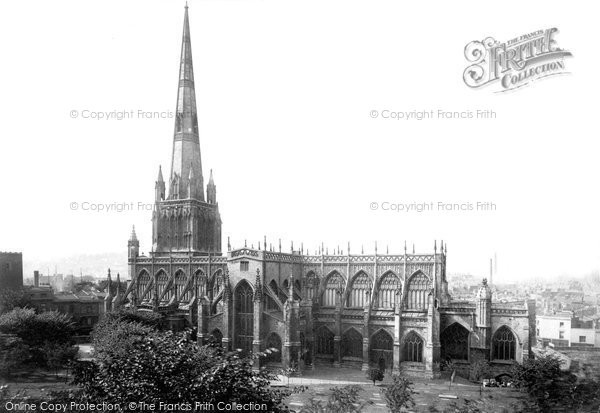Bristol's Loveliest Church, St Mary Redcliffe.
A Memory of Bristol.
St Mary Redcliffe Church.
Bristol's loveliest church, St Mary Redcliffe, was described as 'the fairest, the goodliest and most famous parish church in England' by Queen Elizabeth I in 1574. Thanks to what Bristol's 1970's town planners presumably considered their finest hour, the church is surrounded by dual carriageways. Enter the church by the north portal, a magnificent structure dating to the early 14th century with an intricate hexagonal design that, intriguingly, is similar to those in mosques and courtyards in Yemen. In the churchyard lies the grave of a church cat which died in 1927. It is thought that the church's bells rang out when William Wilberforce's Bill to abolish slavery was defeated in 1791.
St Mary Redcliffe is a beautiful church in the city centre of Bristol, in south-western England, and is one of the largest parish churches in the country. There isn't a graveyard as such, but outside the church on the grass area outside the main door there is one small but very unusual memorial tablet: to a cat.
Not named on the stone, Tom, a tabby kitten, was found outside the priests' entrance to the building, sometime in 1912. Maybe he liked the sound of the organ music that was being played at the time! Anyway, he decided it was a good place to stay and spent the next 15 years as 'church cat', becoming quite a local celebrity. For most of his life he was looked after by the verger, Eli Richards. He would process with the choir on occasion, and also liked to sit by the organist's side during rehearsals and for part of the services. The cat was recalled by blind organist Alfred Hollins, who mentioned in his 1936 reminiscences that Tom would sit beside him on the organ stool. He also often liked to sit on someone's lap in the congregation! But he wasn't allowed in the chancel and would be removed if he went there. He was said to have attended many more church services than any one of the clergy.
Tom had an enviable reputation as a catcher of rats and mice, and also kept in check the large numbers of pigeons that would frequent the churchyard. He seems to have had a penchant for hiding the remains of his prey - or perhaps he had a favourite spot where he liked to take his victims to devour them. In any case, when the altar cross was removed in the early 1920s, a large zinc bathtub was filled three times with bones and feathers he had left behind!
This staunch church cat died in 1927, and in recognition of his many years of devoted service he was given a grand funeral; the small coffin was borne to its resting place by the verger, accompanied by the vicar and church wardens, while suitable music was played on the organ - which surely Tom would have appreciated.
A sonnet to his memory was written by one Gilbert Croker:
Beneath a stone in Redcliffe's churchyard lies
What was a strange thing in God's house: a cat,
Which was, before its very sad demise,
Often upon the organ-stool just sat
Listening to the music played soft and sweet,
Or, in the organist's lap so still and warm,
It would not 'turn a whisker' at the treat
Of the noise changing to a pedalled storm!
Its purpose in life was to keep from view
Those furry creatures, lest they think a pew -
Especially at Harvest time of year -
To be a place that would, to them, be dear.
Now the number of its years can be found
To all who look within this holy ground.
(With acknowledgements to St Mary's leaflet about Tom, written by Stephen Richards, grandson of former verger Eli.)
Add your comment
You must be signed-in to your Frith account to post a comment.
Add to Album
You must be signed in to save to an album
Sign inSparked a Memory for you?
If this has sparked a memory, why not share it here?




Comments & Feedback